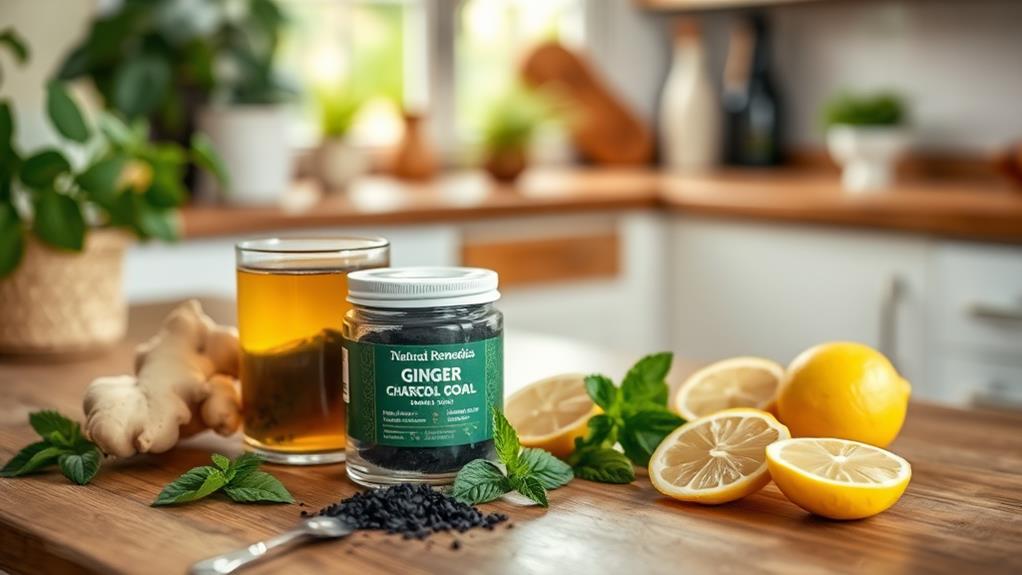When food poisoning strikes, it can disrupt your entire day and leave you searching for quick relief. You might find that simple remedies, like staying hydrated and following the BRAT diet, can help ease your symptoms. However, understanding how to effectively prevent food poisoning in the first place is just as essential. You may be surprised at how easy it is to avoid high-risk foods and implement safe handling practices. Let's explore the remedies and preventative measures you can adopt to safeguard your health moving forward.
Understanding Food Poisoning
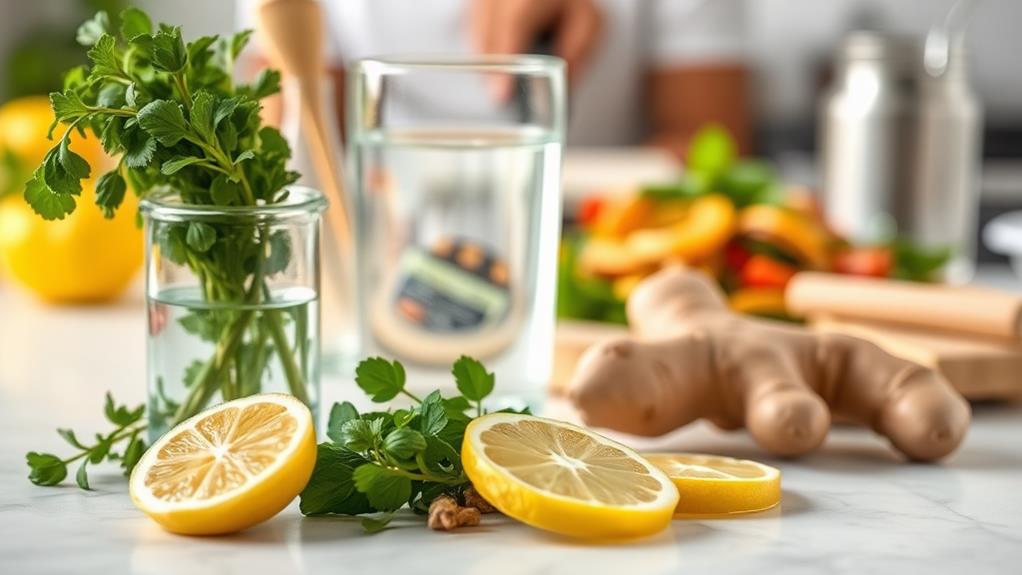
Food poisoning, a common yet often misunderstood health issue, occurs when you consume contaminated food or drinks. You mightn't realize it, but food poisoning can sneak up on you, usually showing its symptoms within 2 to 6 hours after eating.
It's caused by nasty little critters like bacteria, viruses, and parasites. Some of the usual suspects include Salmonella, E. coli, and Norovirus. Fun fact: the CDC estimates around 48 million cases of food poisoning happen every year in the U.S. That's a lot of upset stomachs!
Now, it's important to know that not everyone gets hit the same way. High-risk groups, like older adults and pregnant folks, can experience more severe symptoms. While you might just feel a little queasy, others could be facing dehydration or a fever.
So, how can you prevent this unwelcome guest from crashing your dinner party? Make sure to wash your hands, cook your food thoroughly, and always check expiration dates.
Common Symptoms to Watch For
When it comes to food poisoning, recognizing the symptoms early can make a big difference in your recovery. The symptoms of food poisoning can sneak up on you, usually appearing within 2-6 hours after eating something questionable. You might start feeling nauseous, and before you know it, you could be running to the bathroom with diarrhea or experiencing some serious vomiting. It's not a fun time!
Keep an eye out for other signs, like abdominal cramps and a fever. If your fever exceeds 102°F (38.9°C), or if you notice blood in your vomit or stool, it's time to call for help. These are serious symptoms and shouldn't be ignored.
Also, don't forget about dehydration. If you can't keep any fluids down and your mouth feels like the Sahara Desert, that's a red flag!
Effective Home Remedies
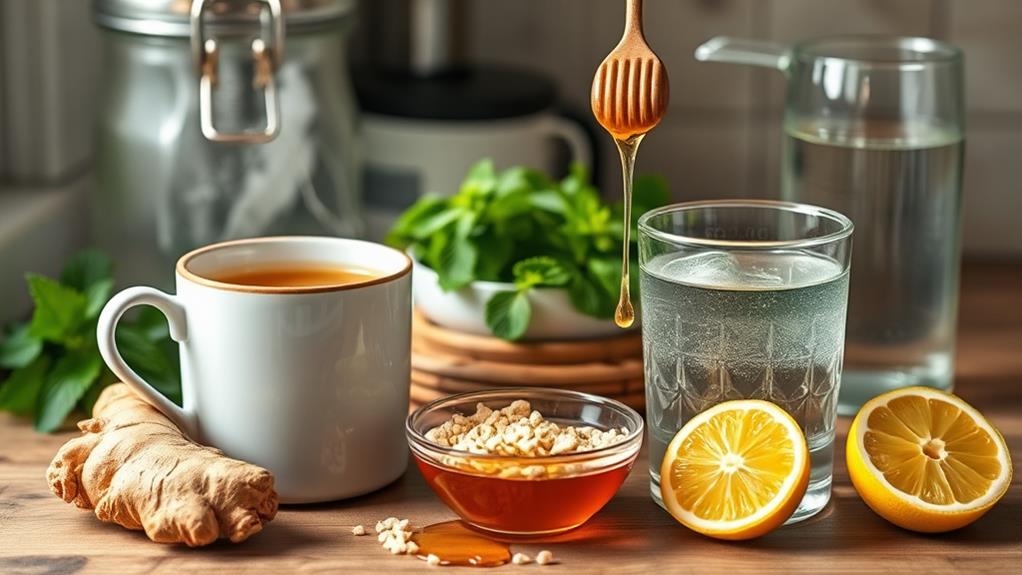
If you find yourself dealing with food poisoning, there are several effective home remedies that can help ease your discomfort and speed up recovery.
First, staying hydrated is super important. Drink clear fluids like water, diluted fruit juices, or broth, especially if you're experiencing vomiting and diarrhea. This helps prevent dehydration, which is no fun!
Once your stomach feels a bit better, you can try the BRAT diet—Bananas, Rice, Applesauce, and Toast. These bland foods are gentle on your tummy. Just steer clear of dairy, caffeine, and fatty foods, as they can make things worse.
If you need extra relief, over-the-counter medicines like Pepto-Bismol can help with nausea and diarrhea. Just be cautious and avoid them if you have bloody diarrhea or a high fever.
For those who lose a lot of fluids, oral rehydration solutions, like Pedialyte, can help replace lost electrolytes, especially for little ones or the elderly.
Importance of Hydration
Staying on top of your hydration is vital during food poisoning, as it helps replace the fluids and electrolytes lost through vomiting and diarrhea. If you don't keep hydrated, you risk dehydration, which can lead to serious health problems.
So, what should you drink? Clear liquids like water, diluted fruit juices, and broths are your best friends. Just remember to sip them slowly, especially if you're feeling queasy.
Oral rehydration solutions like Pedialyte can really help, too, especially for infants and the elderly who need extra care. Keep an eye out for signs of dehydration, like a dry mouth, very little urine, or feeling super thirsty. If you notice these symptoms, it's time to get more fluids in your system!
The good news is that maintaining hydration can speed up your recovery. Most food poisoning symptoms usually clear up within 48 hours if you stay on top of it.
Over-the-Counter Medications
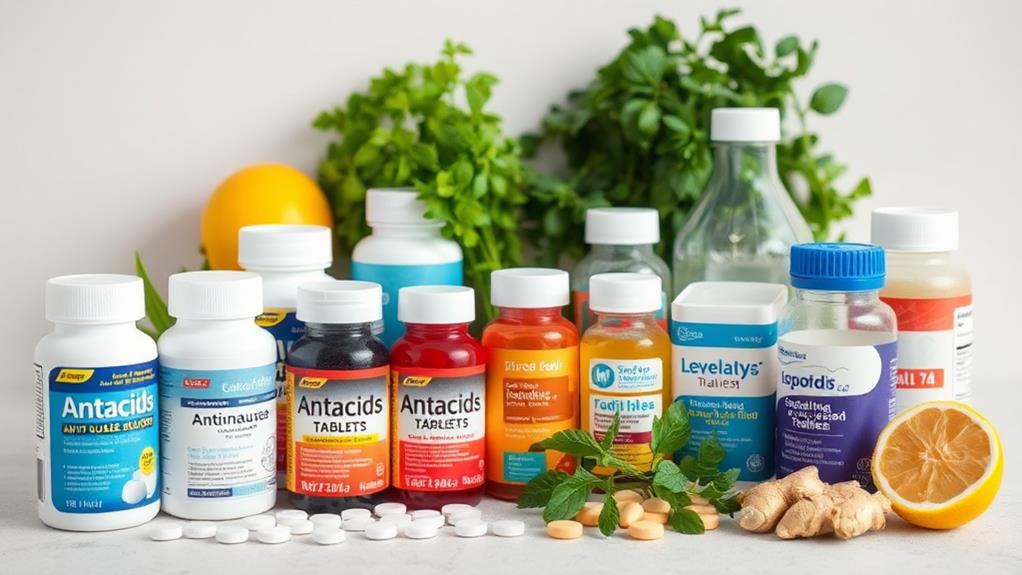
After managing your hydration, you might consider over-the-counter medications to ease the discomfort of food poisoning.
These handy remedies can help you feel a bit better while your body kicks the unwanted germs to the curb. For non-bloody diarrhea, loperamide (like Imodium A-D) can be a lifesaver.
Meanwhile, if nausea and an upset stomach are crashing your party, bismuth subsalicylate (Pepto-Bismol) might just do the trick.
But hold on! If you see blood in your stool or have a high fever, skip the over-the-counter options and consult a healthcare provider instead—those signs could mean something more serious.
It's always smart to read the dosage instructions carefully, and if you're treating a child, check with a doctor. Not all medications are safe for younger patients.
When to Seek Medical Help
Knowing when to seek medical help during a bout of food poisoning can be essential for your health. If you're experiencing diarrhea that lasts more than three days, it's time to act. Prolonged symptoms might mean you have a serious infection that needs medical attention.
A fever over 102°F (38.9°C) isn't just a number; it's a sign that a severe bacterial infection could be at play, so don't wait to get checked out.
If you notice blood in your vomit or stool, that's a serious warning sign. You shouldn't hesitate—seek medical help immediately!
Also, watch out for signs of severe dehydration. If you're not urinating much, have a dry mouth, or can't keep fluids down because of frequent vomiting, you might need urgent care, possibly even IV fluids to get you back on track.
Safe Food Handling Practices
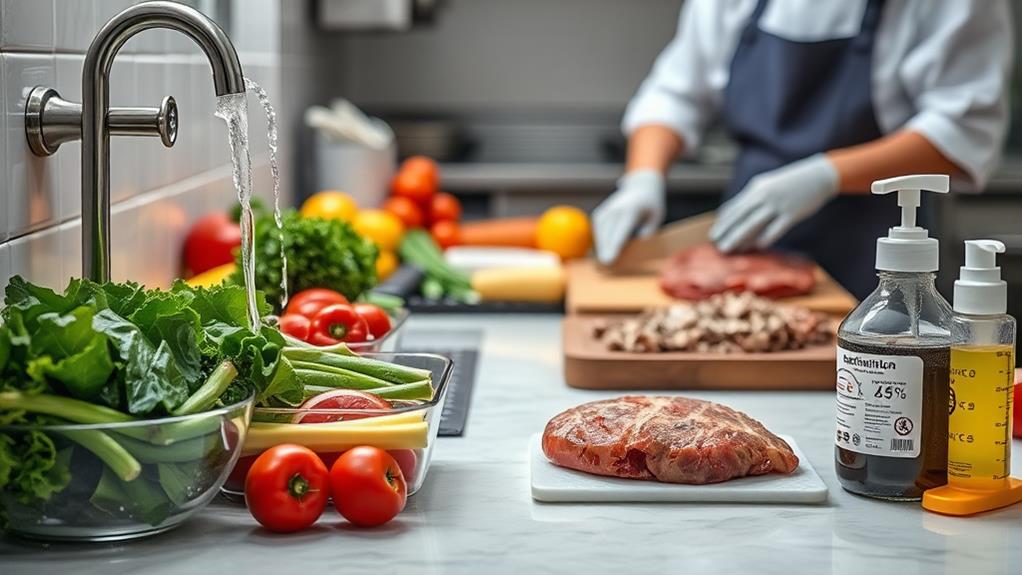
Practicing safe food handling is essential to preventing foodborne illnesses. You can start by washing your hands with soap and water for at least 20 seconds before and after handling food. It's a simple step, but it makes a big difference in food safety!
Don't forget to clean your fruits and veggies under running water, too. They can carry dirt and germs, and nobody wants contaminated food on their plate.
Using separate cutting boards is another smart move. Keep raw meats on one board and everything else on another to avoid cross-contamination. You wouldn't want a chicken sandwich to be the reason for a tummy ache!
Cooking your food to the right temperature is key, too. For instance, poultry should reach 165°F, while ground meats need to hit 160°F. This helps kill off any nasty bacteria that could be lurking around.
High-Risk Foods to Avoid
Even with safe food handling practices in place, certain high-risk foods can still pose a significant threat to your health.
You'll want to steer clear of undercooked meat, especially poultry and ground beef. These can hide nasty bacteria like Salmonella and E. coli, just waiting to ruin your day.
Next up, watch out for raw or undercooked eggs. You might love that homemade mayonnaise, but it could come with a side of Salmonella if you're not careful.
Unpasteurized dairy products, like certain cheeses and milk, can also pack a punch. They may contain dangerous pathogens, so stick with pasteurized options.
And don't forget about raw fruits and vegetables. If they're not washed properly, they could carry harmful bacteria. Leafy greens like spinach have been linked to outbreaks, so wash those greens well!
Lastly, be cautious with seafood. Raw or undercooked shellfish can harbor Vibrio bacteria, which can lead to foodborne illness.
Long-Term Prevention Tips
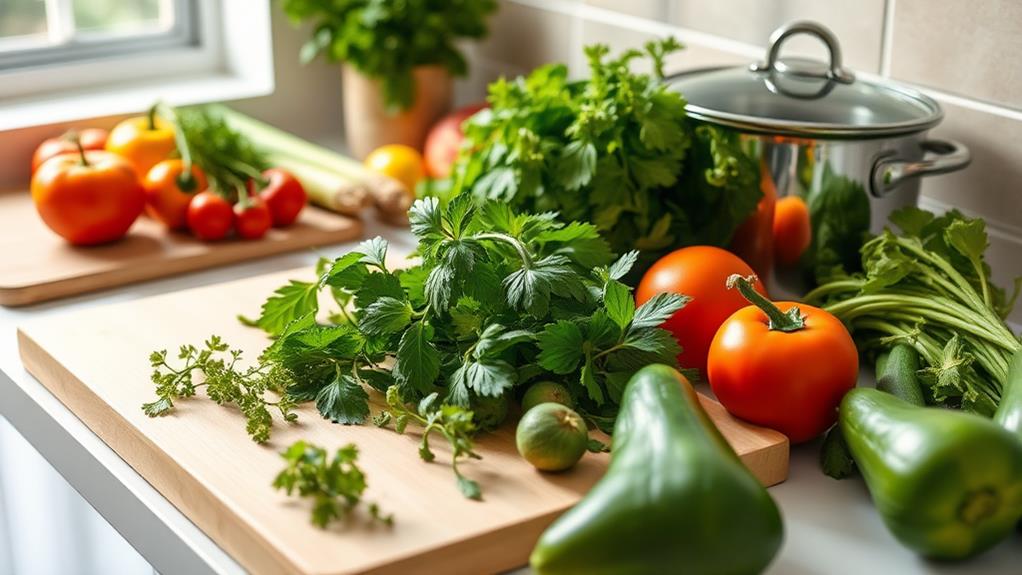
Long-term food safety hinges on adopting effective prevention strategies that make your kitchen a safer environment.
To keep your meals safe, remember the mantra: "Clean, Separate, Cook, Chill." It's like a recipe for success! Make sure you're washing your hands and surfaces often, and use separate cutting boards for raw meats and veggies to prevent food poisoning.
You also want to keep an eye on your food storage. Refrigerate perishable items within two hours—bacteria love to grow in warm places!
And when you cook, check those internal temperatures; poultry should reach 165°F to kick harmful germs to the curb.
Stay informed, too! Regularly check resources like foodsafety.gov for food recalls and safety alerts. You wouldn't want to munch on something that could make you feel yucky, right?

